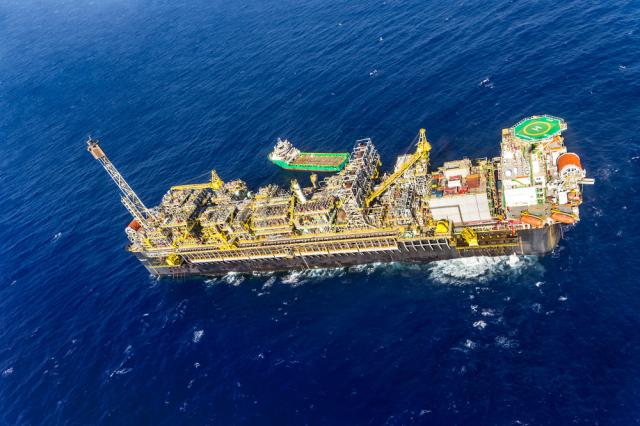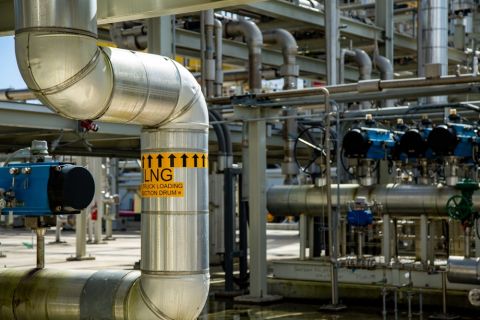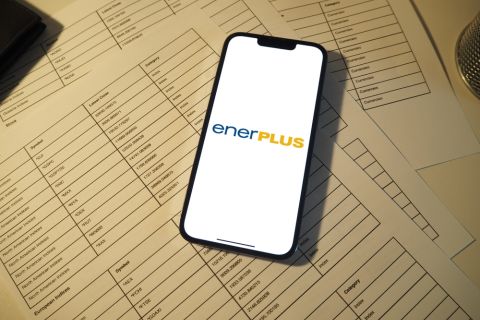
FPSO P-67 operates in the Lula presalt oil field offshore Brazil. (Source: André Motta/Petrobras)
RIO DE JANEIRO—The Lula Field, the first presalt oil field to enter operations offshore Brazil, could hit 1 million barrels of oil equivalent per day (MMboe/d) less than one decade after it began producing oil in 2010.
The field is producing about 900,000 boe/d as operator Petrobras moves deeper into the field’s last phase of development. The company began pumping first oil from the last FPSO installed at the field in February, moving closer to the 1 MMboe/d production mark.
Named FPSO P-67, the 353,000-ton vessel can produce up to 150,000 boe/d and process 6 million cubic meters of gas per day, according to Petrobras, which partnered with Royal Dutch Shell (20%) and the Portuguese oil company Galp (10%) to develop resources from Lula.
Shell Brazil CEO Andre Araújo considers the field one of the world’s most prolific assets.
“We continue to see a great future for the Lula Field. Every day we learn more in this partnership (with Petrobras and Galp),” Araújo said. “With the advance of the project, we periodically discuss priorities with partners, with great respect and collaboration.”
The success of Brazil’s E&P activities over the past two decades is largely due to the presalt layer, which has attracted supermajors such as Exxon Mobil Corp., Royal Dutch Shell ad Chevron among others. Most of this success relies on output from the giant Lula Field.
Discovered in the early 2000s, Lula was the first of many discoveries in the Brazilian presalt layer located in the Santos and Campos basins at a depth of 7,000 m.
Since 2006, more than 20 drilling rigs have been used in the construction of wells in the Lula Field and nine FPSOs are currently operating in the field.
The partners have invested roughly US$30 billion in the exploration and development of the field, according to Petrobras. But their efforts have come with challenges, including geological ones considering Petrobras called the field complex with peculiar rocks.
Innovative technologies
Of Brazil’s presalt fields, the largest collection of geological data such as rock samples, 3-D seismic, electrical profiles, petrophysical analysis and dynamic data have been amassed for Lula.
“This information is crucial for the geological understanding of the field. The integrated analysis of these data allowed the company to understand the main process controls involved in the origin of the reservoir rocks and how they are distributed along the Lula Field,” Petrobras said in a statement. “Also, this process allows Petrobras to understand the variations of the main properties that affect the fluid dynamics in the reservoir and feed three-dimensional numerical models that serve as the basis for proposing a robust development plan for the field.”
The Brazilian operator also said that nine innovative technology procedures were implemented in the field. A set of these technologies received the Offshore Technology Conference’s Distinguished Achievement Award in 2015.
“The application of these technologies in the Lula field represented a major milestone in the development of presalt, given the unprecedented nature of these technologies in the offshore industry.” the Brazilian major said.
The technologies included first buoy supporting risers, steel catenary risers with lined pipes installed using the reel lay method and application of flexible risers with integrated monitoring system for traction wires. Presalt technological achievements also included having the deepest underwater gas injection well with CO2 (in water depth of 2,220 m) and intensive use of intelligent completion in ultradeep waters in the satellite wells among other accomplishments.
Overcoming challenges
Petrobras said the partnership has successfully overcome challenges such as numerical simulation of giant and complex fields throughout the years. They have also reduced the time to obtain results from days to hours through work in partnership with software vendors and continuous investment in hardware.
They have also made use of digitalization at Lula.
“As tools of instrumentation, we have pressure and temperature meters installed in the production column and in the Christmas tree of each well, which send data in real time, helping decision making and making room for machine learning tools with identification of gain in production,” Petrobras explained. “In addition, we have several software developed internally that are the state of the art for the development and management of reservoirs.”
But the company said more challenges must be overcome in the near future.
“Among the challenges to overcome, we can highlight the use of 4-D seismic as an optimization tool aiming at a greater recovery factor as well as the continuity of the management of the integrity of the equipment in extremely severe conditions,” the company said.
Petrobras also pointed out the importance of the Integrated Operation Center (COI), which conducts real-time monitoring and supports the crew 24 hours a day. COI also provides an integrated monitoring system for flexible riser traction wires and the integrated operation of the gas drainage networks.
Recommended Reading
JMR Services, A-Plus P&A to Merge Companies
2024-03-05 - The combined organization will operate under JMR Services and aims to become the largest pure-play plug and abandonment company in the nation.
New Fortress Energy Sells Two Power Plants to Puerto Rico
2024-03-18 - New Fortress Energy sold two power plants to the Puerto Rico Electric Power Authority to provide cleaner and lower cost energy to the island.
SilverBow Rejects Kimmeridge’s Latest Offer, ‘Sets the Record Straight’
2024-03-28 - In a letter to SilverBow shareholders, the E&P said Kimmeridge’s offer “substantially undervalues SilverBow” and that Kimmeridge’s own South Texas gas asset values are “overstated.”
Enerplus Increases Quarterly Cash Dividend
2024-02-23 - Enerplus Corp. increased its dividend 8% to US$0.065 (CA$0.088) per share.
Nebula Energy Buys Majority Stake in AG&P LNG
2024-01-31 - AG&P will now operate as an independent subsidiary of Nebula Energy with key offices in UAE, Singapore, India, Vietnam and Indonesia.





